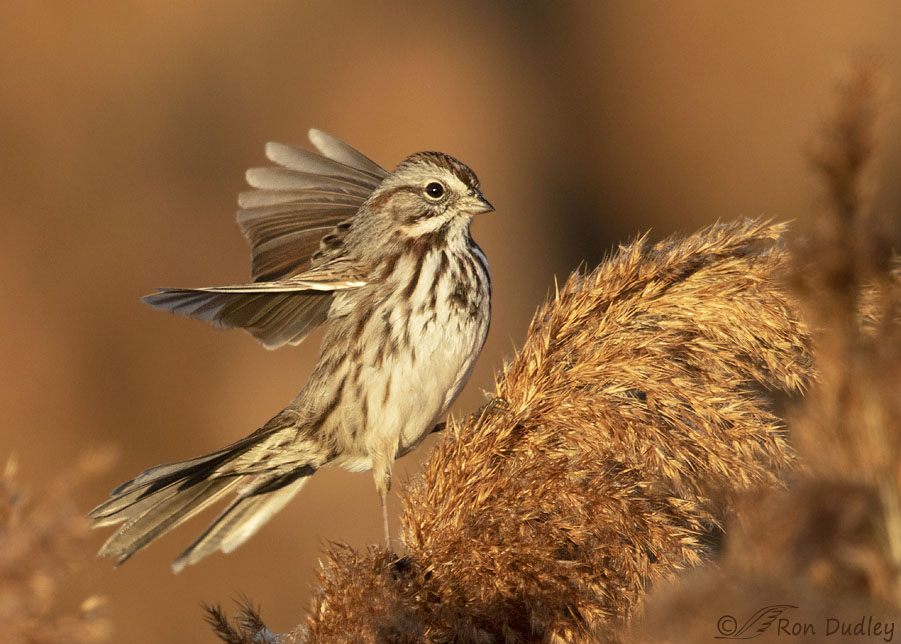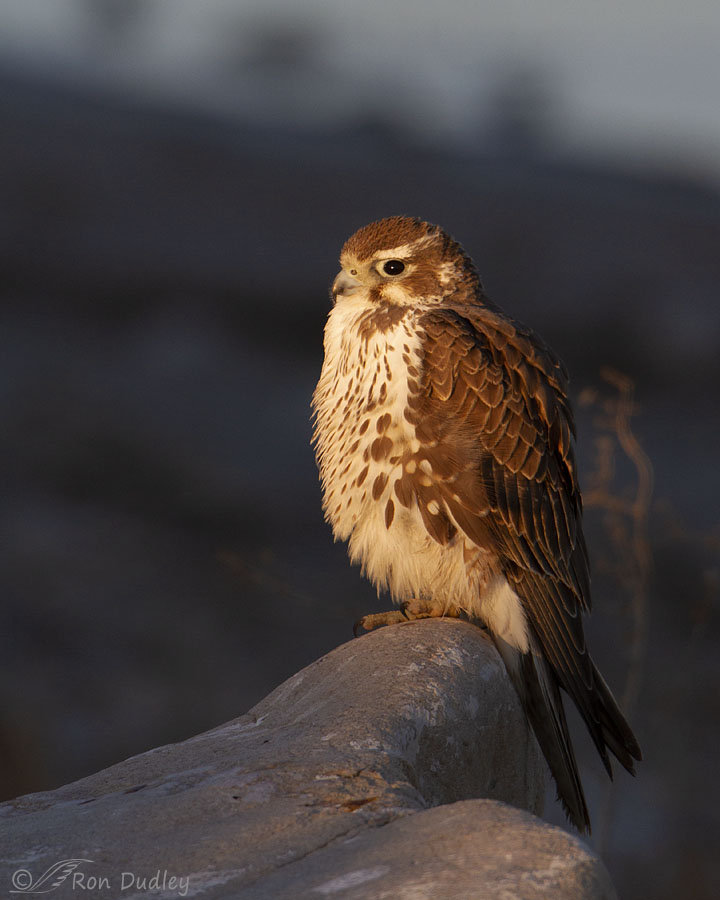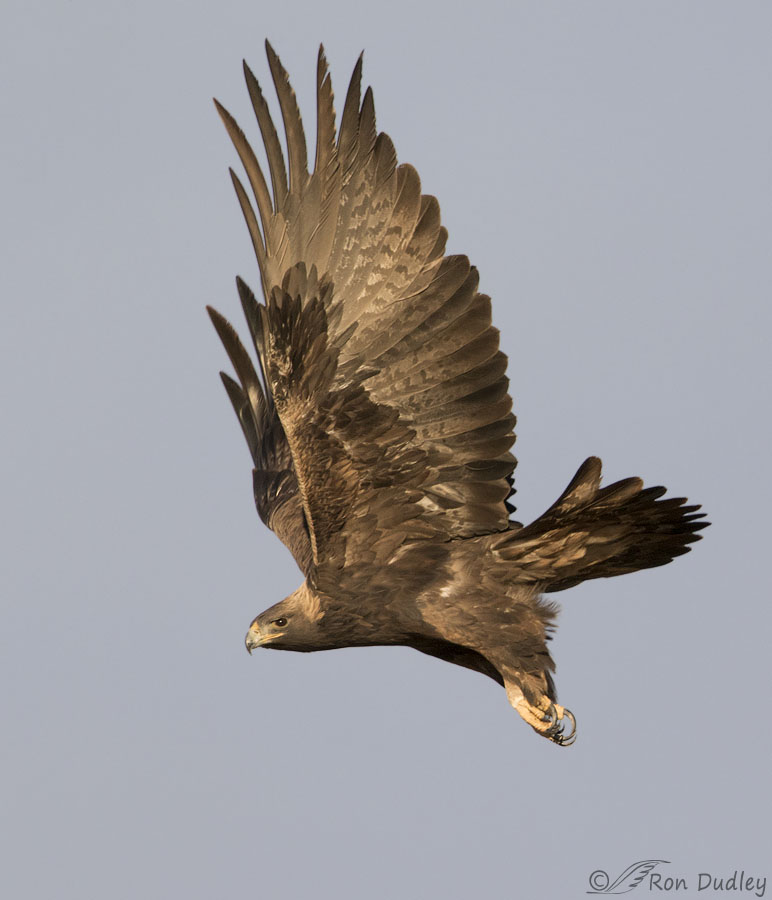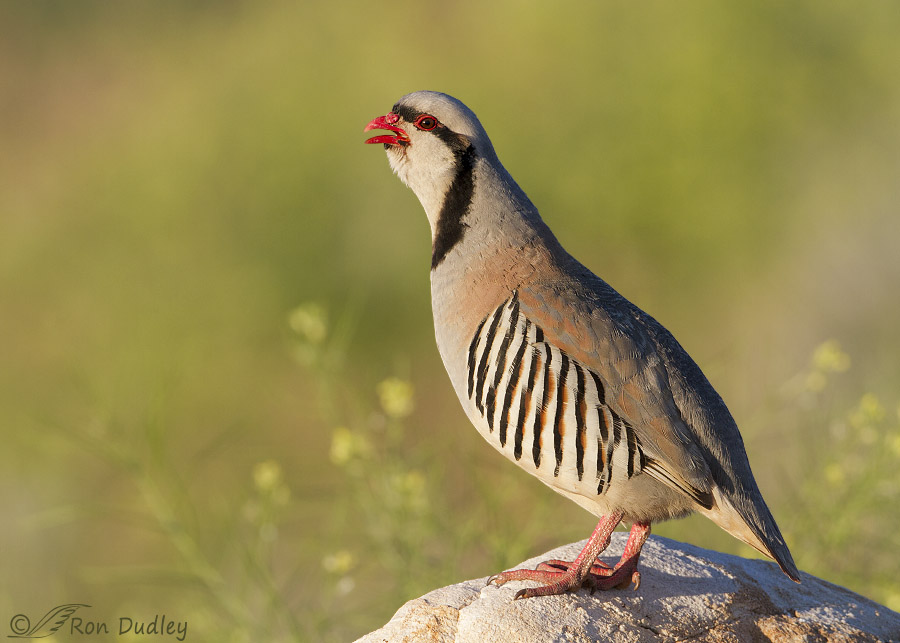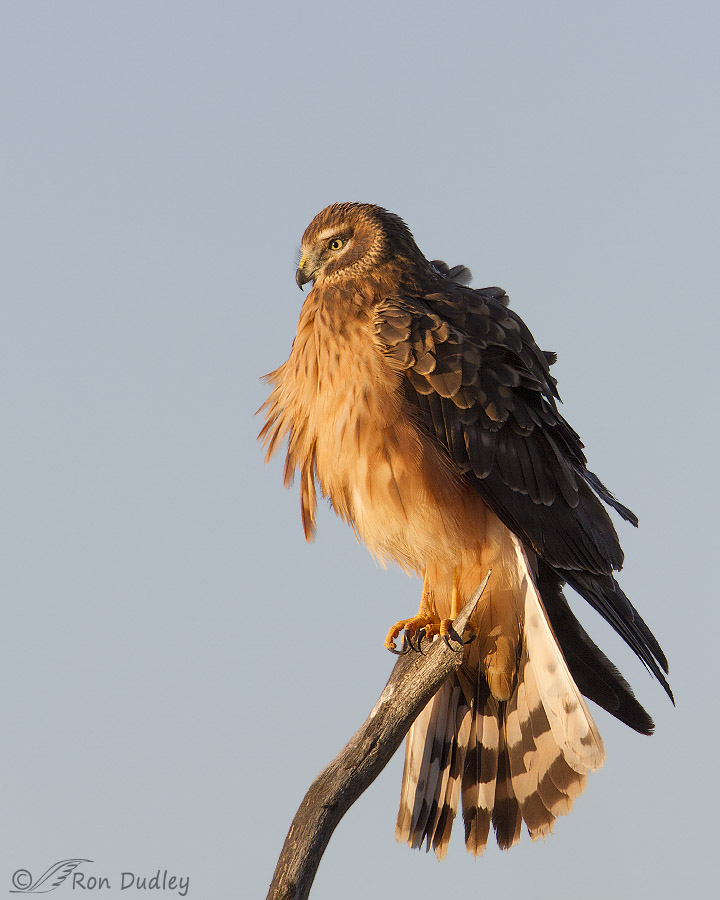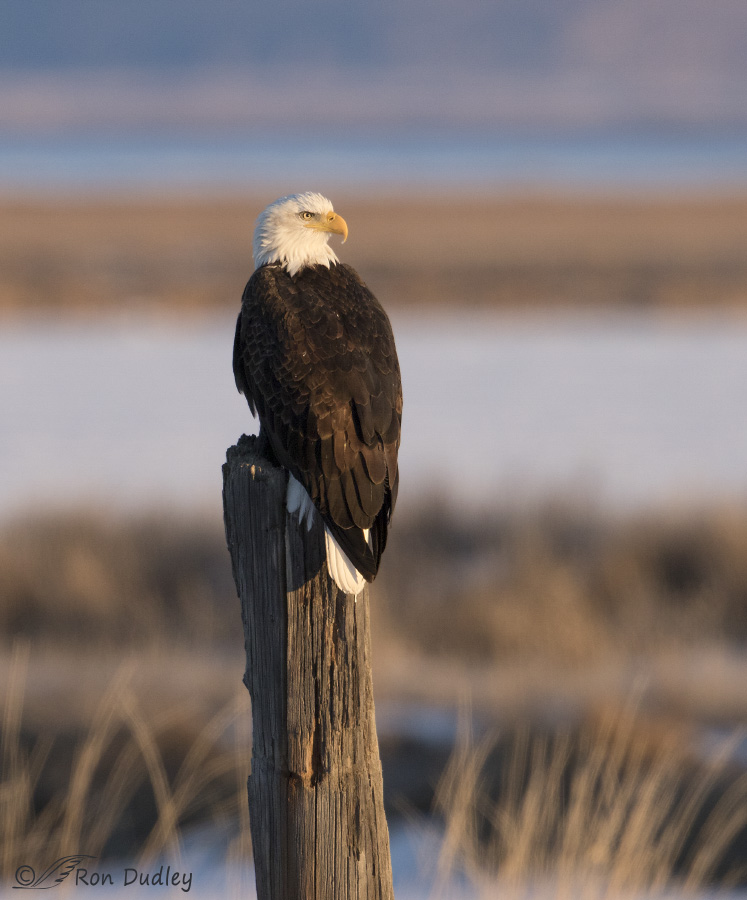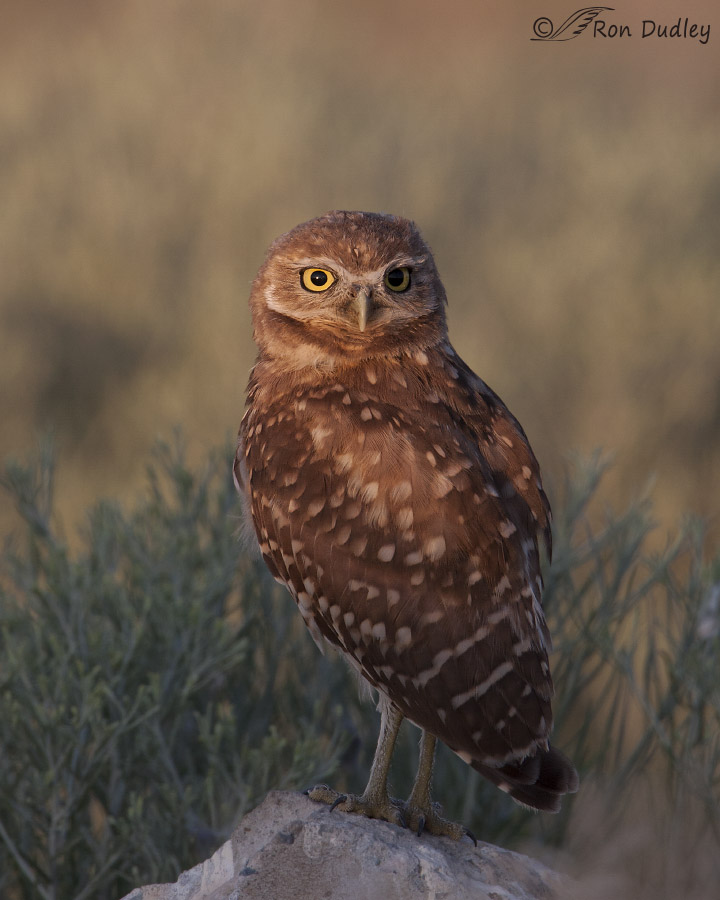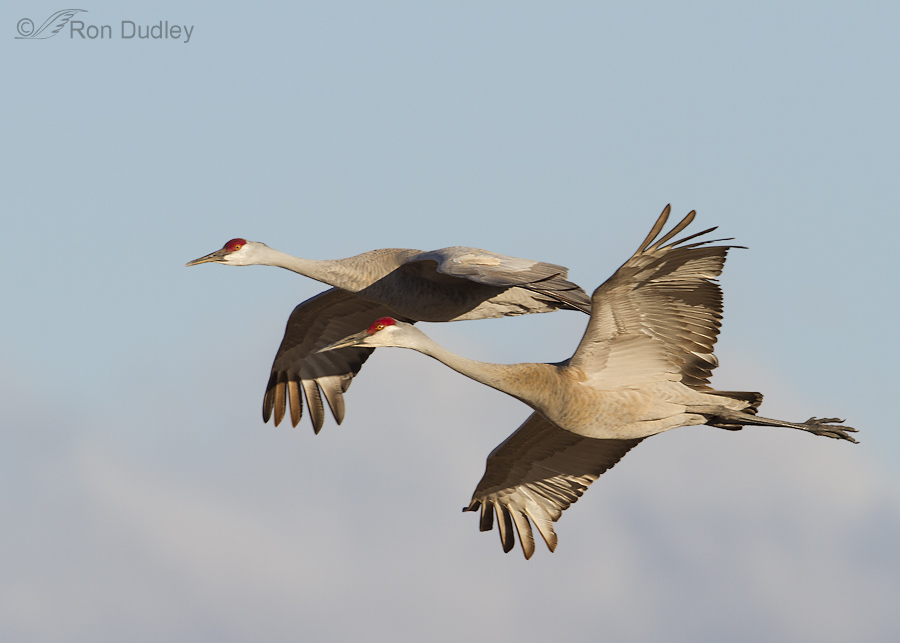Tag: warm light
Spotlit Prairie Falcon
Golden Eagle, Golden Light And Flight
Chukar Calling In Warm Light
Northern Harrier In Very Warm Light
Bald Eagle – A Dramatic Illustration Of The Effects Of Warm Light
Juvenile Burrowing Owl – This One’s About The Light
Mated Pairs Of Sandhill Cranes In Flight
Warm vs Cool Light – Minutes Matter
Color temperature (white balance) can make a big difference in photography and nature photography is certainly no exception. I seldom manipulate white balance during processing and never do it if I’m confident that my camera has rendered the image to look like it did in the field. 1/000, f/7.1, ISO 640, 500 f/4, 1.4 tc, natural light, not set up or called in The natural colors of the Loggerhead Shrike are gray, black and white but those colors are affected by the temperature of the light. I photographed this bird on November 26, 2012 at 7:56 am, very soon after the sun had come up over the Wasatch Mountains. Notice the warm, golden tones on the grays and the whites of the bird, and on the perch. They can even be seen in the almost black beak. 1/000, f/7.1, ISO 640, 500 f/4, 1.4 tc, natural light, not set up or called in Just 20 minutes later, at 8:16 am, I photographed this shrike on a different perch. By then the sun was higher in the sky and the light was filtered through relatively thin clouds. I think the difference in color tone of the two images is dramatic. Even though nature photographers often prefer warmer colors in their images I’m not suggesting that either warmer or cooler colors are necessarily “better” than the other. I’m only saying that they can have a huge overall effect on the image. And that mere minutes matter. Ron
Mallard Reflection
“Reflecting” my need to work with an image with some color for a change (after all of the snow, brutal cold and gray skies we’ve been having) and also inspired by some recent discussion with blog reader Sue Johnson regarding reflections, I’ve chosen to post something this morning that’s a little different for me. Last July I found this wild female Mallard posing and preening on a perch I liked and in warm, early morning light. 1/320, f/6.3, ISO 500, 500 f/4, 1.4 tc, natural light As I gained experience as a photographer I found myself gravitating away from reflections, often preferring instead the fine detail typically available in traditional portraits. But for my tastes, this image provides both – good detail and a strong reflection. I like the setting, pose, perch, light and reflection. In fact I like the reflection (bird and water colors) at least as much as I do the live bird. The image may be a little tight for some but it’s very close to full frame, shot vertically, and I just didn’t have as much wiggle room as I would have liked. I thought I’d present the image for your consideration anyway… Ron
Just a Shot That I Like…#28 – Male American Kestrel In Warm Light
For the New Year I’ve decided to resurrect my “Just A Shot That I Like” feature. For some reason I stopped using it and I’m not really sure why. There are times when I want to post just a single image and this feature seems ideal for those situations. 1/1600, f/6.3, ISO 640, 500 f/4, 1.4 tc, natural light, not baited, set up or called in Two days ago I found this handsome male American Kestrel posing on rabbitbrush just as the sun was coming up over the mountains. I like the warm, early morning light and the pose. Best wishes and a happy and prosperous New Year to you all! Ron
Great Horned Owls On The Montana Family Farm
Note: When I first started blogging 19 months ago, I somewhat arbitrarily decided to post my photos at 720 pixels on the long side. It didn’t take me long to change my mind and begin posting significantly larger images for the much better quality that becomes apparent at that larger size. Since that time I’ve pretty much ignored those early posts, until yesterday when Ingrid Taylar brought my attention to this Great Horned Owl post and it reminded me just how small the images are. So, I’ve decided to repost a very few of those very early works, with some additions and changes which will include: larger images – 900 pixels on the long side additional images, in most cases techs included with the photos updated narrative I’m thinking there might be two or three of these reposts over the next several weeks. I hope you’ll bear with me… For many years now there has been at least one pair of nesting Great Horned Owls on the farm where I grew up near Cut Bank, Montana. They were never there when I was a kid but they’ve sure taken to it since. This farm still seems like home to me and I return to it at least once every year for a visit with family and of course to check up on the owls. It’s the perfect place for these birds as it’s isolated, there are many old barns and granaries for the owls to find sanctuary and the area is literally crawling with field mice, voles and the ubiquitous Richardson’s Ground Squirrel…
Shrikes And A Lesson For Me In Light
Birds on Antelope Island have been few and far between lately and yesterday was no exception. But a couple of Loggerhead Shrikes saved my morning and taught me yet another lesson in light. 1/1000, f/7.1, ISO 640, 500 f/4, 1.4 tc, natural light, not baited, set up or called in It was mostly cloudy on the island when we got there just as the sun was coming up over the mountains but there was a crack in those clouds that provided some very warm light for a few minutes just as we found this cooperative shrike. The golden light provides colors to the bird and perch – an effect that I like, especially with the dark storm clouds in the background. 1/500, f/7.1, ISO 640, 500 f/4, 1.4 tc, natural light, not baited, set up or called in I was only able to get off a few shots before the shrike flew to another perch, which gave me side light on the bird. This is a tricky lighting situation. When the bird was facing left into the sun the bright whites on the breast and neck “blew out” (too bright with no detail) and the shadows on the back of the shrike were too dark. But when it turned to its right and looked over its shoulder at me the exposure worked much better. The problem with this pose was getting both light in the eye and good eye contact. This image was one of the few that worked. I like the contrasting cool and warm tones on the shrike….
Snow Geese On The Causeway
For the last few days there have been two Snow Geese along the causeway to Antelope Island – an adult and a juvenile. This species nests on the arctic tundra and is in the midst of migration to more hospitable climes for the winter. Parents stay with their young through the first winter and families generally don’t break up until they reach their breeding grounds the following spring. 1/500, f/7.1, ISO 640, 500 f/4, 1.4 tc, natural light When we relocated these two birds yesterday morning (we’d also seen them two days before) the sun had not yet cleared the elevated causeway road so the birds were still in shade. I include this image so adult and juvenile can be compared and so that you can see the dramatic changes that occur when the warm, early morning light advances on the birds. 1/640, f/6.3, ISO 500, 500 f/4, 1.4 tc, natural light Here, the light has just reached the head and neck of the adult. 1/640, f/6.3, ISO 500, 500 f/4, 1.4 tc, natural light A few seconds later it has advanced to the feet but not to the ground. It was interesting to watch the light move down the bird. 1/2000, f/6.3, ISO 500, 500 f/4, 1.4 tc, natural light I didn’t get a lot of action out of either bird – this yawn from the juvenile… 1/1000, f/6.3, ISO 500, 500 f/4, 1.4 tc, natural light and a wing and foot stretch was about the only “excitement”…
Swainson’s Hawks In Different Types Of Light
It goes without saying that light angle, intensity and warmth can have huge effects on an image, both positive and negative. I thought it might be interesting to see the effects of different types of light on the same species – in this case, Swainson’s Hawks. 1/160, f/6.3, ISO 640, 500 f/4, 1.4 tc, natural light, not baited, set up or called in Here, the sun was low and the light warm. The light was directional (side lighting the bird) but it worked pretty well because the darker parts of the bird are in the direct light. The head angle is just right for this pose – if the head were angled any more toward me I’d have lost the catch light and light on the face. If it were turned any more away from me I’d have lost good eye contact. 1/1250, f/5.6, ISO 640, 500 f/4, 1.4 tc, natural light, not baited, set up or called in Like in the previous image, this hawk is side lit. The difference is that the bird has its light, creamy colored belly facing the sun so the whites, though they’re not blown out, are a tad too bright and lacking detail. 1/2000, f/6.3, ISO 500, 500 f/4, natural light, not baited, set up or called in I took this image a little later in the morning, so the light wasn’t so warm and at that angle enough of it is reflecting up from the ground to give me sufficient detail in the shaded, dark brown plumage…
Spotlit Prairie Falcon
Golden Eagle, Golden Light And Flight
Chukar Calling In Warm Light
Northern Harrier In Very Warm Light
Bald Eagle – A Dramatic Illustration Of The Effects Of Warm Light
Juvenile Burrowing Owl – This One’s About The Light
Mated Pairs Of Sandhill Cranes In Flight
Warm vs Cool Light – Minutes Matter
Color temperature (white balance) can make a big difference in photography and nature photography is certainly no exception. I seldom manipulate white balance during processing and never do it if I’m confident that my camera has rendered the image to look like it did in the field. 1/000, f/7.1, ISO 640, 500 f/4, 1.4 tc, natural light, not set up or called in The natural colors of the Loggerhead Shrike are gray, black and white but those colors are affected by the temperature of the light. I photographed this bird on November 26, 2012 at 7:56 am, very soon after the sun had come up over the Wasatch Mountains. Notice the warm, golden tones on the grays and the whites of the bird, and on the perch. They can even be seen in the almost black beak. 1/000, f/7.1, ISO 640, 500 f/4, 1.4 tc, natural light, not set up or called in Just 20 minutes later, at 8:16 am, I photographed this shrike on a different perch. By then the sun was higher in the sky and the light was filtered through relatively thin clouds. I think the difference in color tone of the two images is dramatic. Even though nature photographers often prefer warmer colors in their images I’m not suggesting that either warmer or cooler colors are necessarily “better” than the other. I’m only saying that they can have a huge overall effect on the image. And that mere minutes matter. Ron
Mallard Reflection
“Reflecting” my need to work with an image with some color for a change (after all of the snow, brutal cold and gray skies we’ve been having) and also inspired by some recent discussion with blog reader Sue Johnson regarding reflections, I’ve chosen to post something this morning that’s a little different for me. Last July I found this wild female Mallard posing and preening on a perch I liked and in warm, early morning light. 1/320, f/6.3, ISO 500, 500 f/4, 1.4 tc, natural light As I gained experience as a photographer I found myself gravitating away from reflections, often preferring instead the fine detail typically available in traditional portraits. But for my tastes, this image provides both – good detail and a strong reflection. I like the setting, pose, perch, light and reflection. In fact I like the reflection (bird and water colors) at least as much as I do the live bird. The image may be a little tight for some but it’s very close to full frame, shot vertically, and I just didn’t have as much wiggle room as I would have liked. I thought I’d present the image for your consideration anyway… Ron
Just a Shot That I Like…#28 – Male American Kestrel In Warm Light
For the New Year I’ve decided to resurrect my “Just A Shot That I Like” feature. For some reason I stopped using it and I’m not really sure why. There are times when I want to post just a single image and this feature seems ideal for those situations. 1/1600, f/6.3, ISO 640, 500 f/4, 1.4 tc, natural light, not baited, set up or called in Two days ago I found this handsome male American Kestrel posing on rabbitbrush just as the sun was coming up over the mountains. I like the warm, early morning light and the pose. Best wishes and a happy and prosperous New Year to you all! Ron
Great Horned Owls On The Montana Family Farm
Note: When I first started blogging 19 months ago, I somewhat arbitrarily decided to post my photos at 720 pixels on the long side. It didn’t take me long to change my mind and begin posting significantly larger images for the much better quality that becomes apparent at that larger size. Since that time I’ve pretty much ignored those early posts, until yesterday when Ingrid Taylar brought my attention to this Great Horned Owl post and it reminded me just how small the images are. So, I’ve decided to repost a very few of those very early works, with some additions and changes which will include: larger images – 900 pixels on the long side additional images, in most cases techs included with the photos updated narrative I’m thinking there might be two or three of these reposts over the next several weeks. I hope you’ll bear with me… For many years now there has been at least one pair of nesting Great Horned Owls on the farm where I grew up near Cut Bank, Montana. They were never there when I was a kid but they’ve sure taken to it since. This farm still seems like home to me and I return to it at least once every year for a visit with family and of course to check up on the owls. It’s the perfect place for these birds as it’s isolated, there are many old barns and granaries for the owls to find sanctuary and the area is literally crawling with field mice, voles and the ubiquitous Richardson’s Ground Squirrel…
Shrikes And A Lesson For Me In Light
Birds on Antelope Island have been few and far between lately and yesterday was no exception. But a couple of Loggerhead Shrikes saved my morning and taught me yet another lesson in light. 1/1000, f/7.1, ISO 640, 500 f/4, 1.4 tc, natural light, not baited, set up or called in It was mostly cloudy on the island when we got there just as the sun was coming up over the mountains but there was a crack in those clouds that provided some very warm light for a few minutes just as we found this cooperative shrike. The golden light provides colors to the bird and perch – an effect that I like, especially with the dark storm clouds in the background. 1/500, f/7.1, ISO 640, 500 f/4, 1.4 tc, natural light, not baited, set up or called in I was only able to get off a few shots before the shrike flew to another perch, which gave me side light on the bird. This is a tricky lighting situation. When the bird was facing left into the sun the bright whites on the breast and neck “blew out” (too bright with no detail) and the shadows on the back of the shrike were too dark. But when it turned to its right and looked over its shoulder at me the exposure worked much better. The problem with this pose was getting both light in the eye and good eye contact. This image was one of the few that worked. I like the contrasting cool and warm tones on the shrike….
Snow Geese On The Causeway
For the last few days there have been two Snow Geese along the causeway to Antelope Island – an adult and a juvenile. This species nests on the arctic tundra and is in the midst of migration to more hospitable climes for the winter. Parents stay with their young through the first winter and families generally don’t break up until they reach their breeding grounds the following spring. 1/500, f/7.1, ISO 640, 500 f/4, 1.4 tc, natural light When we relocated these two birds yesterday morning (we’d also seen them two days before) the sun had not yet cleared the elevated causeway road so the birds were still in shade. I include this image so adult and juvenile can be compared and so that you can see the dramatic changes that occur when the warm, early morning light advances on the birds. 1/640, f/6.3, ISO 500, 500 f/4, 1.4 tc, natural light Here, the light has just reached the head and neck of the adult. 1/640, f/6.3, ISO 500, 500 f/4, 1.4 tc, natural light A few seconds later it has advanced to the feet but not to the ground. It was interesting to watch the light move down the bird. 1/2000, f/6.3, ISO 500, 500 f/4, 1.4 tc, natural light I didn’t get a lot of action out of either bird – this yawn from the juvenile… 1/1000, f/6.3, ISO 500, 500 f/4, 1.4 tc, natural light and a wing and foot stretch was about the only “excitement”…
Swainson’s Hawks In Different Types Of Light
It goes without saying that light angle, intensity and warmth can have huge effects on an image, both positive and negative. I thought it might be interesting to see the effects of different types of light on the same species – in this case, Swainson’s Hawks. 1/160, f/6.3, ISO 640, 500 f/4, 1.4 tc, natural light, not baited, set up or called in Here, the sun was low and the light warm. The light was directional (side lighting the bird) but it worked pretty well because the darker parts of the bird are in the direct light. The head angle is just right for this pose – if the head were angled any more toward me I’d have lost the catch light and light on the face. If it were turned any more away from me I’d have lost good eye contact. 1/1250, f/5.6, ISO 640, 500 f/4, 1.4 tc, natural light, not baited, set up or called in Like in the previous image, this hawk is side lit. The difference is that the bird has its light, creamy colored belly facing the sun so the whites, though they’re not blown out, are a tad too bright and lacking detail. 1/2000, f/6.3, ISO 500, 500 f/4, natural light, not baited, set up or called in I took this image a little later in the morning, so the light wasn’t so warm and at that angle enough of it is reflecting up from the ground to give me sufficient detail in the shaded, dark brown plumage…


